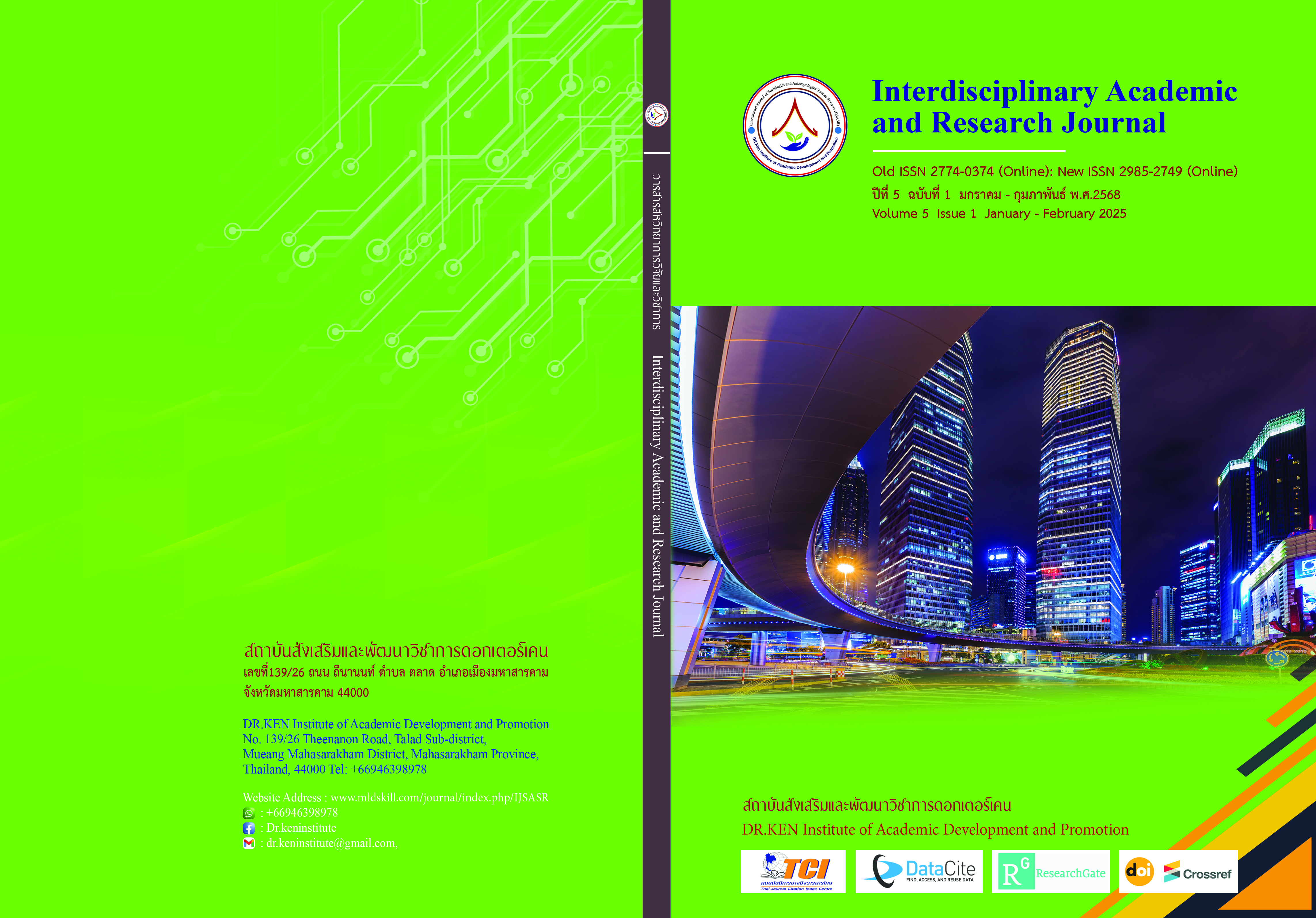A Study of the Results of Using the Flipped Classroom and Video Teaching Methods in Classroom Action Research Course
DOI:
https://doi.org/10.60027/iarj.2025.280137Keywords:
Flipped classroom, Active learning, Video teaching method, Classroom action researchAbstract
Background and Aims: This study is a classroom action research, to solve the problem of the proportion of practice time promoting students' learning and academic achievement in classroom action research course. This research aims to (1) study the academic achievement of students using the flipped classroom and video teaching methods in a classroom action research course and (2) compare the academic achievement of students using the flipped classroom and video teaching methods in a classroom action research course.
Methodology: This research used quasi-experimental research, and was conducted with 75 undergraduate students, at Ramkhamhaeng University, who registered and took the examination of classroom action research course (37 students participated in the flipped classroom teaching method and 38 used the video teaching method). The research instruments were lesson plans using flipped classroom teaching method and the academic achievement exams. The data were analyzed using basic statistics, including mean and standard deviation.
Results: Findings are as follows. (1) For The academic achievement of students using the flipped classroom teaching method, the mean score was 39.12, and the standard deviation was 3.345, and for the academic achievement of students using the video teaching methods, the mean score was 27.55 and the standard deviation was 3.564 from 50 points. (2) The average academic achievement of students using the flipped classroom teaching method is higher than using the video teaching methods (39.12 > 27.55)
Conclusion: The flipped classroom teaching method is possible to solve the problem of proportional practice time by responding to the diverse needs and abilities of students effective learning occurs. Students also develop teamwork and communication skills, promote critical thinking and problem solving, including a positive attitude towards studying in the action research course in the classroom.
References
บุญชม ศรีสะอาด. (2546). การวิจัยสำหรับครู. กรุงเทพฯ : สุวีริยาสาส์น
พิชิต ฤทธิ์จรูญ. (2561). เทคนิคการวิจัยเพื่อพัฒนาการเรียนรู้. โรงพิมพ์แห่งจุฬาลงกรณ์มหาวิทยาลัย.
รุ่งภรณ์ กล้ายประยงค์. (2563). การจัดการเรียนรู้เชิงรุกในสาระการเรียนรู้การศึกษาค้นคว้าด้วยตนเอง. วารสารสถาบันวิจัยญาณสังวร, 11(1), 104–113.
รุ่งภรณ์ กล้ายประยงค์. (2566). ความเครียด ความวิตกกังวล และภาวะซึมเศร้าของนักศึกษาระดับปริญญาตรี คณะศึกษาศาสตร์ มหาวิทยาลัยรามคำแหง ในยุคการหยุดชะงักสองต่อ. วารสารรามคำแหง ฉบับบัณฑิตวิทยาลัย, 6(3), 33–48.
Afshar, M., Zarei, A., Moghaddam, M.R., & Shoorei, H. (2024). Flipped and peer-assisted teaching: A new model in virtual anatomy education. BMC Medical Education, 24(1), 722. https://doi.org/10.1186/s12909-024-05697-4 DOI: https://doi.org/10.1186/s12909-024-05697-4
Bergmann, J., & Sams, A. (2012). Flip your classroom: Reach every student in every class every day. Eugene, OR: International Society for Technology in Education.
Ettien, A., & Touré, Y. É. J. (2023). Theoretical Foundations of the Flipped Classroom. European Journal of Education and Pedagogy, 4(6), 53–57. https://doi.org/10.24018/ejedu.2023.4.6.771 DOI: https://doi.org/10.24018/ejedu.2023.4.6.771
Riddle, E., Gier, E., & Williams, K. (2020). Utility of the flipped classroom when teaching clinical nutrition material. Journal of the Academy of Nutrition and Dietetics, 120(3), 351–358. https://doi.org/10.1016/j.jand.2019.09.015 DOI: https://doi.org/10.1016/j.jand.2019.09.015
Suire, K., Hastert, M., Herrmann, S. D., & Donnelly, J. E. (2024). Feasibility of the flipped classroom approach for health education in a clinical weight loss program. PEC Innovation, 5, 100308. https://doi.org/10.1016/j.pecinn.2024.100308 DOI: https://doi.org/10.1016/j.pecinn.2024.100308
Tawafak, R., Alfarsi, G., Jabbar, J., Iqbal Malik, S., Mathew, R., AlSidiri, A., Shakir, M., & Romli, A. (2021). Impact of Technologies During COVID-19 Pandemic for Improving Behavior Intention to Use E-learning. International Journal of Interactive Mobile Technologies (iJIM) 15(1), 184. DOI:10.3991/ijim.v15i01.17847 DOI: https://doi.org/10.3991/ijim.v15i01.17847
Telford, M., & Senior, E. (2017). Healthcare students’ experiences when integrating e-learning and flipped classroom instructional approaches. British Journal of Nursing, 26(11), 617–622. https://doi.org/10.12968/bjon.2017.26.11.617 DOI: https://doi.org/10.12968/bjon.2017.26.11.617
Downloads
Published
How to Cite
Issue
Section
License
Copyright (c) 2025 Interdisciplinary Academic and Research Journal

This work is licensed under a Creative Commons Attribution-NonCommercial-NoDerivatives 4.0 International License.
Copyright on any article in the Interdisciplinary Academic and Research Journal is retained by the author(s) under the under the Creative Commons Attribution-NonCommercial-NoDerivatives 4.0 International License. Permission to use text, content, images, etc. of publication. Any user to read, download, copy, distribute, print, search, or link to the full texts of articles, crawl them for indexing, pass them as data to software, or use them for any other lawful purpose. But do not use it for commercial use or with the intent to benefit any business.
















.png)


